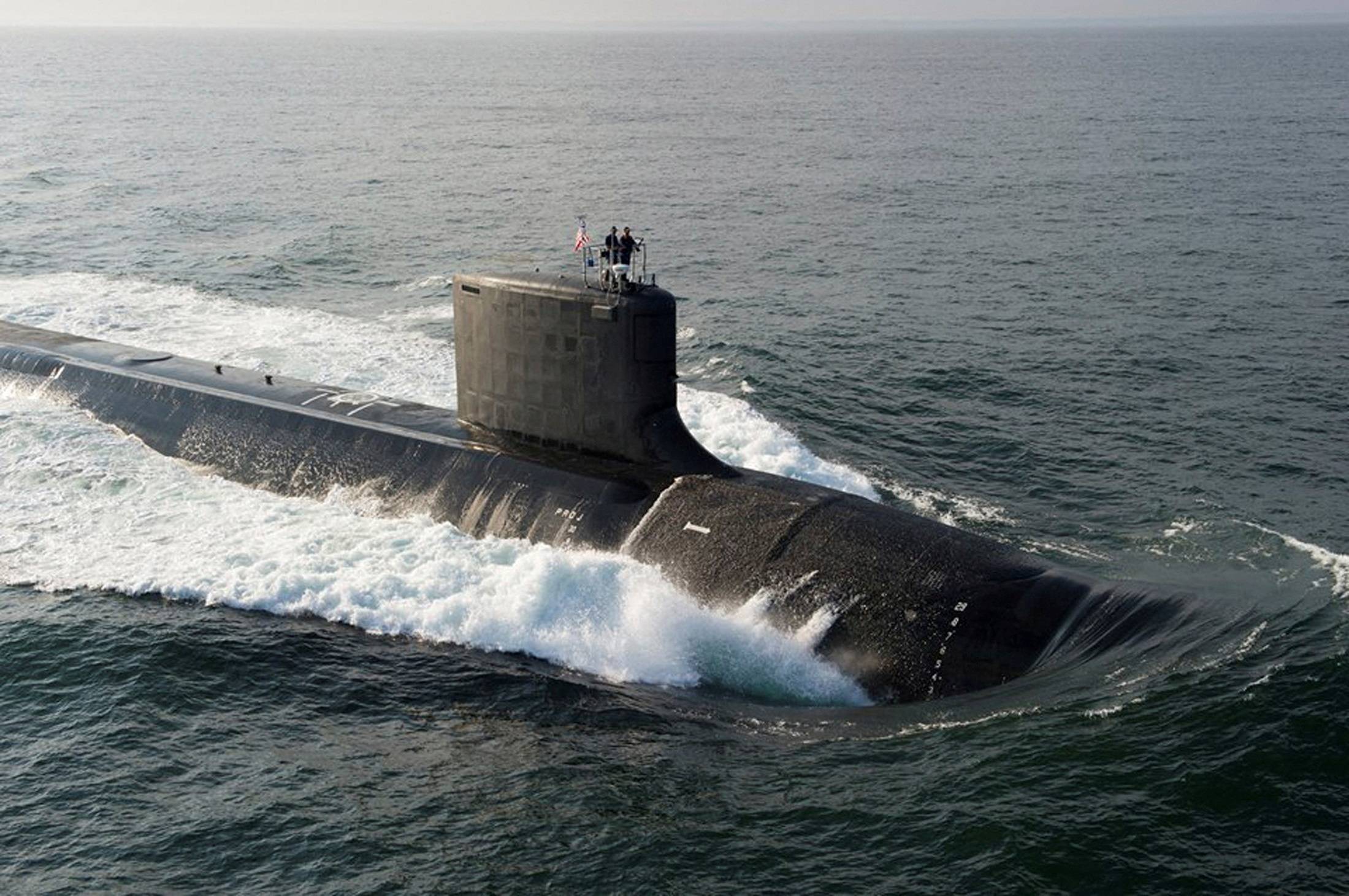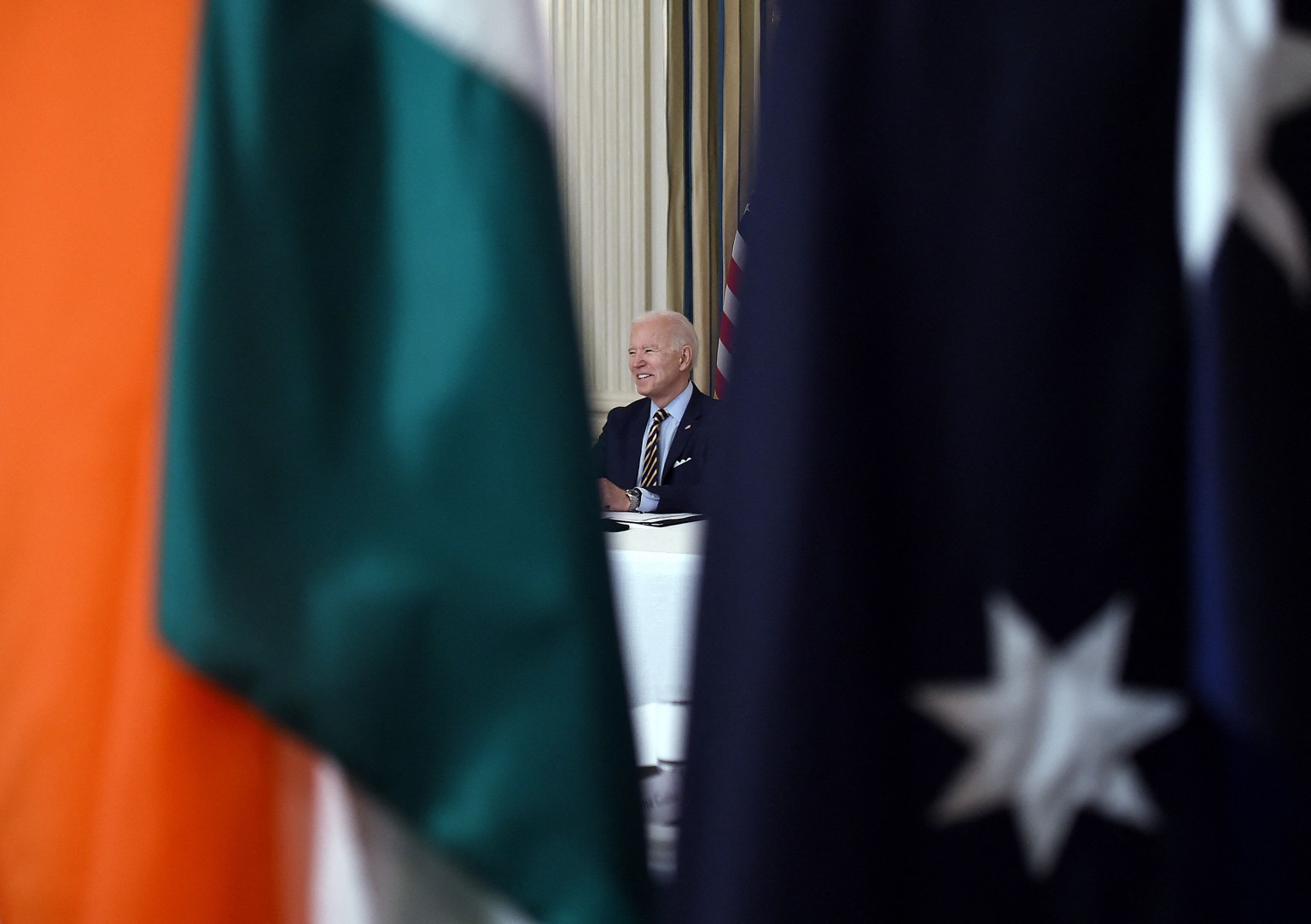Australia Fast-Tracks Itself Into a Formidable Naval Power With Sub Deal
THE JAPAN TIMES
APLN member Ramesh Thakur points out that there are several real risks that could yet thwart the AUKUS submarine deal, such as cost overruns, construction delays, U.S. presidential and congressional politics. Read the original article here.
The two key institutions undergirding Australia’s current geostrategic settings to manage its national security needs over the next 50 years are the Quadrilateral Security Dialogue forum in which the navies of Australia, India, Japan and the U.S. cooperate in the Indo-Pacific maritime space and the Australia-U.K.-U.S. (AUKUS) pact. Neither existed a decade ago. “The Quad” seemed to have been mothballed and AUKUS was not even a gleam in the eye of any of the three leaders at the time.
On Monday, U.S. President Joe Biden hosted a meeting in San Diego with Australian Prime Minister Anthony Albanese and British leader Rishi Sunak to announce they had reached agreement on the path forward to implement the goal, first announced in September 2021, to create a fleet of nuclear-powered submarines for Australia. Australia will initially buy three Virginia class U.S. submarines from 2032, with the option to buy another two later if desired. Australia will contribute towards expanded U.S. capacity to build the subs.
The three allies will begin work on eight next-generation Astute class British submarines, to be called AUKUS, as the world’s most advanced subs. Based on the British design and equipped with cutting-edge U.S. submarine technologies, weapons and combat systems, the ships will be built in Adelaide, with first delivery by 2042. In the meantime, Britain and the U.S. will rotate their nuclear-powered submarines into port in Perth from 2027. This two-lane “optimal pathway” addresses the capability gap in the original AUKUS announced in 2021 that envisaged a long lead time before the first subs entered into service in 2038.
This is a substantial upgrade from Australia’s existing six Collins class diesel electric submarines. Nuclear submarines give greater reach and longer continuous underwater at sea deployment. Other items in the announcement include long-term plans to cooperate on quantum computing, AI, cyberwarfare and missiles.
Biden described the naval partnership as a critical instrument, at this “inflection point in history,” to stabilize the Indo-Pacific region at a time of rising tensions and the distinct possibility of a war over Taiwan. For the first time in 65 years, the U.S. will share technology at the heart of its nuclear submarines, creating a “nuclear stewardship” among the three allies. However, he took pains to emphasize that the subs will not carry any nuclear weapons.
Sunak said the growing security challenges confronting the world include “Russia’s illegal invasion of Ukraine, China’s growing assertiveness, the destabilizing behavior of Iran and North Korea” that “threaten to create a world codefined by danger, disorder and division.” He described the deal as the “most significant multilateral defense partnership in generations” and committed the U.K. to boost defense spending beyond the baseline commitment of 2% to 2.5% of gross domestic product.
Albanese said the AUKUS submarine project is “the biggest single investment in Australia’s defense capability in all of our history.” Officials insist Australia will have complete sovereign command over the submarines.
The most consequential aspect of AUKUS is it embeds the U.K. and the U.S. firmly into Australia’s Indo-Pacific strategy. For the first time in history and reflecting the changed post-Ukraine invasion strategic perceptions of interlinkages between events in the two regions, three fleets of nuclear-powered submarines will work together across both the Atlantic and Pacific oceans. The U.S. is “the glue holding this new partnership together,” said national security adviser Jake Sullivan. A de facto linkage has been created between NATO and AUKUS.
Chinese President Xi Jinping last week accused the U.S. of leading Western countries to engage in an “all-around containment, encirclement and suppression of China.” After the announcement, Chinese officials repeated earlier warnings that the development is inconsistent with international nonproliferation obligations and will provoke an arms race in the region. Chinese experts warned that the Royal Australian Navy had become a de facto extension of the U.S. Navy and Australia “has officially put itself on Beijing’s defense radar.”
It’s doubtful that Australia would have contemplated buying nuclear-powered submarines but for the sense of a China threat registering firmly in the national strategic consciousness. It’s equally doubtful that the Quad would have acquired so much operational and practical content so rapidly but for the shared sense of unease at China’s growing assertiveness. Such unease was not caused by China’s rising profile. The allegations of an unprovoked China containment strategy would have had more merit in that case.
The decisions to solidify the Quad and sign AUKUS were both sovereign Australian decisions, not decisions that China made. But it is equally uncontestable that the main driving force between both developments is actions by Beijing that have been regarded as provocative by Canberra, as well as Tokyo, New Delhi and Washington. It intrigues me that often, the very people who articulate this thesis of China’s provocations helping to explain the developments in regard to AUKUS and the Quad reject the directly equivalent thesis with respect to NATO’s eastward expansion provoking Russian military countermeasures.
Of course, the obverse is also true. Many of the same people who eagerly embrace the politically charged thesis that NATO provoked Russia into invading Ukraine in order to secure its vital interests against the relentless march eastwards by the alliance, reject the parallel thesis that China’s militarization and assertiveness all around its giant neighborhood has been the key factor behind the growing consolidation of the Quad and the creation of AUKUS.
Retired Indian Rear Adm. Raja Menon explains how a tri-service new naval base on Greater Nicobar Island, just 145 kilometers from the tip of Indonesia, will give India strategic leverage over China’s sea lanes of communication from the mainland to Djibouti in Africa. An Oceanic strategy centered on Greater Nicobar, drawing on intelligence and communications assets of Quad partners to establish information dominance, will offset China’s asymmetric advantages on land along the Himalayas.
Similarly, it’s indisputable that China has obstructed a genuinely impartial international investigation of the origins of COVID-19. When Australia called it out, Beijing retaliated by putting Australia in the trade doghouse, thereby starkly highlighting its exposure to Chinese coercion — enabled not just with China’s dramatically increased economic clout, but its incremental buildup of military outposts through the strategic but contested South China chain of islets. This has changed both the geography and the balance of power in Australia’s north, sharply degrading its strategic environment.
Given China’s past ties to North Korea and Pakistan, complaints about the proliferation risks of AUKUS are also a bit rich. In any case, Australia will never have operational control of weapons-grade sensitive nuclear materials and the reactors will be returned to the original owners after expiry date.
All that said, because of the complexity and timescale of the multifaceted project to fast-track Australia into a formidable naval power in the region, there are several real risks that could yet thwart the ambition: cost overruns, construction delays, U.S. presidential and congressional politics and other “unknown unknowns.”
Image: Australia’s new nuclear-powered fleet will initially include three U.S. Virginia class submarines. | U.S. NAVY / VIA REUTERS




